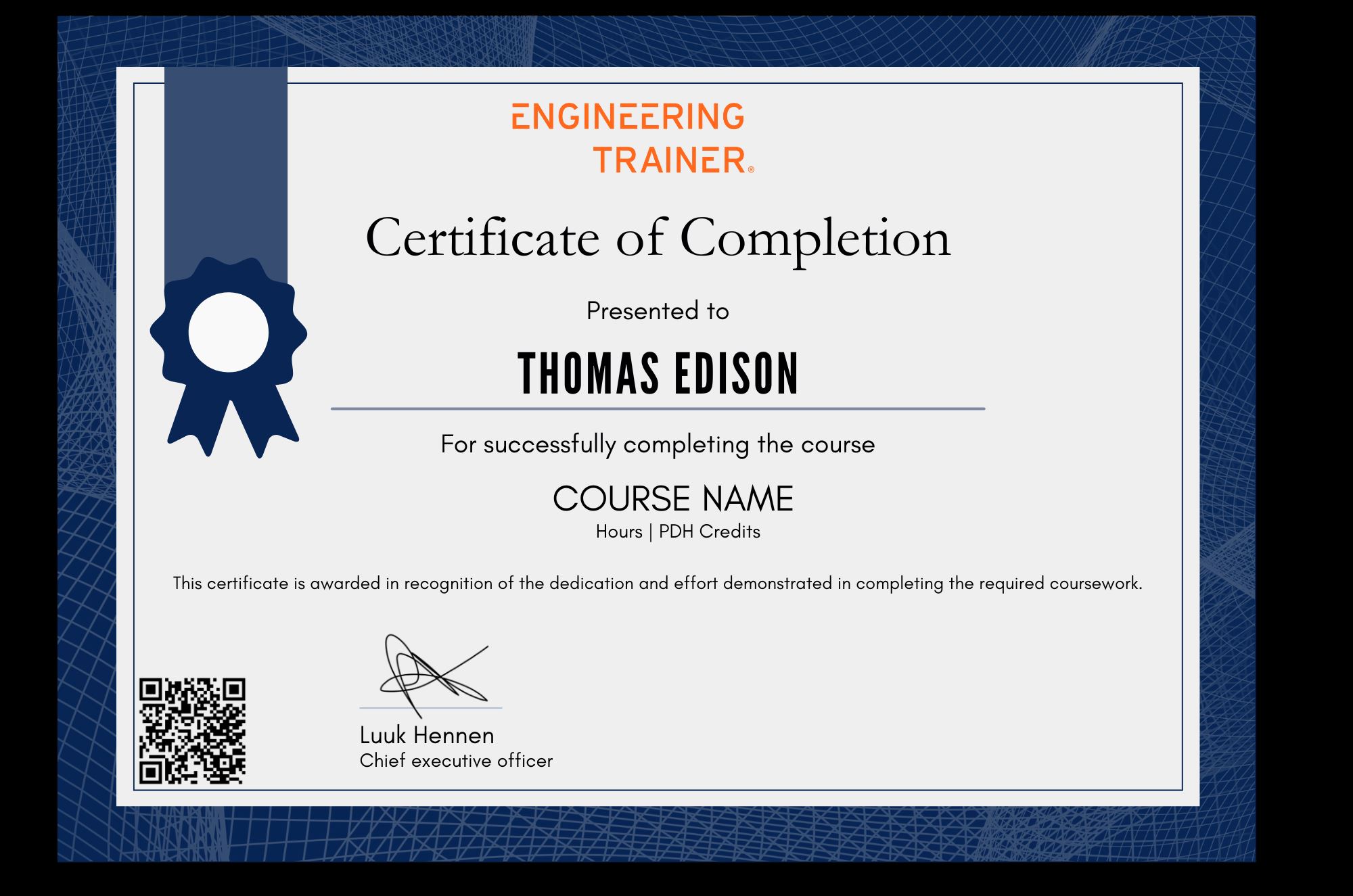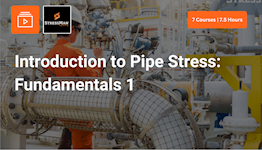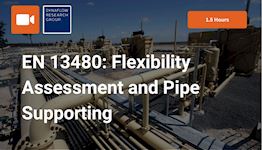Designing according to the EN 13480 code
Why take this course?
This course offers a comprehensive study of EN 13480-3 piping design rules, explaining key principles like allowable stress, load case analysis, and fatigue limits. It also compares EN 13480 with ASME B31.3. The course includes video lectures, quizzes, and exercises, and awards a certificate with PDH credits upon completion.
What you'll learn
After this learning path, you...
• Understand the structure and applicability of the EN 13480 code,
• Know the EN 13480 design rules for pipes, bends, flanges and tees in a piping system,
• Have performed tutorials and quizzes to reinforce how to apply the design rules,
• Familiar with the range of applicability for the EN 13480 design rules,
• Understand the safety factors used in the EN 13480 code and the differences with other design codes,
• Know how to perform a piping flexibility study conform EN 13480, including approach for buried piping and dynamic analysis.
About the course
The EN 13480 design code is frequently used for piping system design for systems in Europe. Often the EN 13480 design rules are applied using automated pipe flexibility software packages such as CAESAR II and the engineer can lose the overview of the calculation being performed.
This learning path aims to explain the fundamental equations and principles in the design rules of the EN 13480-3. For example: How is the allowable design stress calculated? Why should certain load cases be analyzed? What inter-stiffener distance is required to prevent collapse under vacuum? How many cycles are permitted for cyclic loads to avoid fatigue failure? This course covers the design rules of the EN 13480 code and the similarities and differences compared to the American ASME B31.3 code are discussed throughout.
As well as explaining the EN 13480 design rules and how to apply them, you will be challenged on why a rule is formulated in a particular way.
This learning path consists of 7 online, self-study courses, all of which are formed of video lectures, with regular quizzes and exercises to reinforce your learning.
Meet your instructor
Who should attend this course
• Pipe Design Engineers and Pipe Stress Engineers designing piping systems as per the EN 13480 code.• Engineers that need to have a solid understanding of the design approaches used in the EN 13480 code.
• Those involved in pipe system design projects for systems installed within Europe.
Prerequisites
Basic understanding of piping systems is beneficial.Program & Details
-
Welcome
1. Welcome to the course
2. Your instructors
3. How to use this course
4. Personal Certificate requirements -
Course 1 - EN13480: Introduction
1. Introduction to the EN 13480
2. Outline to the EN 13480
3. Loads cases and Failure Types
4. System design with EN 13480-3
5. Material Classification and Standards
6. Design Conditions
7. Thickness Definitions as per EN 13480
8. Joint Coefficient and NDT
9. Allowable Design Stress as per EN 13480 -
Course 2 - EN 13480:Design of Components for Internal Pressure
1. Introduction
2. Internal Pressure Design
3. Straight Piping
4. Bends and Elbows
5. Mitre Bends
6. Conical Shells and Reducers
7. End Closures -
Course 3 - EN 13480: Bolted Flange Design
1. Introduction to Flanges
2. Pressure Rating Method for Flanges
3. Taylor and Forge: Flange Analysis
4. EN 1591-1 method vs Taylor and Forge -
Course 4 - EN 13480: Openings and Nozzles
1. Introduction to Openings and Nozzles
2. Applications and Limitations
3. Isolated Openings and Wall Thickness
4. Adjacent Openings -
Course 5 - EN 13480: External Pressure
1. Introduction to External Pressure
2. Buckling and its Classificaton
3. Cylinders under External Pressure
4. Interstiffener Collapse: Design Steps
5. Buckling safety factor as per EN 13480
6. Ends & Reducers under External Pressure
7. Buckling from an axial force: Annex L -
Course 6 - EN 13480: Fatigue Considerations
1. Fatigue: An introduction
2. Assessment Methods for Fatigue Failure
3. Simplified Assessment: Pressure Cycling
4. Fatigue Design for combined loads -
Course 7 - EN 13480: Flexibility Assessment and Pipe Supporting
1. Introduction and Agenda
2. Piping flexibility: an introduction
3. Stress limits as per EN 13480
4. Stress Intensification Factors
5. Flexibility analysis
6. Dynamic Load Aspects for piping systems
7. Buried piping
8. Support types for piping systems
9. Spring supports
10. Support design -
Final Notes & Certificate
1. Congratulations
2. Course evaluation survey
3. Your Personal Certificate
Certification

Designing according to the EN 13480 code
Library: Professional

Why choose EngineeringTrainer
-
Learn at Your Own Pace
-
Advance Technical Competences
-
Courses by Industry Authorities
The content of this course was of high standard. The visual aids were very good and very technical.
Engineer - KH Engineering







